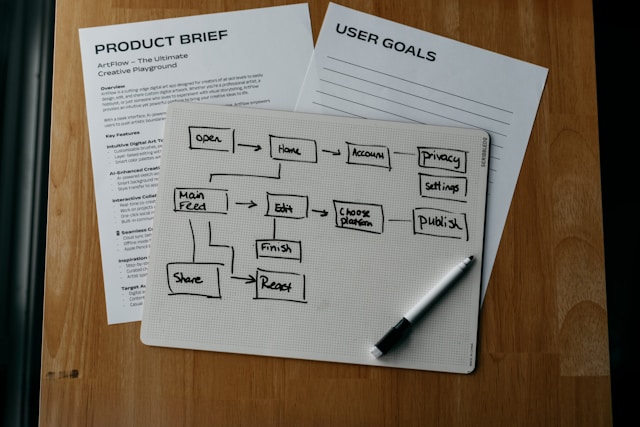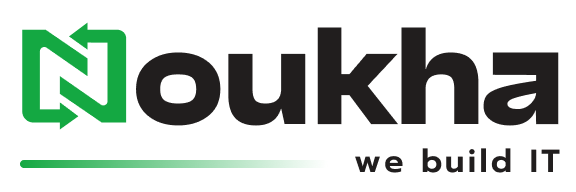The efficient delivery of a new software product into the market demands strategic planning, flexibility and value delivery. In the case of startups and businesses in the USA, the combination of custom software development skills and agile approaches has become the new standard of creating successful Minimum Viable Products (MVPs). At Noukha, our focus is to assist companies in a lean Minimum viable product software development process that is agile-powered, i.e. helping ideas go through an accelerated and affordable path to becoming a market-ready solution.
This blog discusses how the agile principles can change the MVP journey between concept and launch, reducing risk, and maximizing user value.
What is Minimum Viable Product Software Development?
A Minimum Viable Product (MVP) is the simplest form of a software product that can offer fundamental features to address a user issue. The MVP software development approach is based on the concept of creating only enough functionalities that will appeal to early adopters and prove assumptions and receive feedback that is easy to act on. It is an established method that assists in saving time and resources through avoiding overbuilding.
Together with agile, which is a responsive and iterative approach to development, the MVP process will be more efficient. Agile divides the development into short sprints, promotes regular reviews, and promotes adaptation using the actual user feedback.
The importance of Agile to simplify MVP development
Iterative Development Cycles
Agile breaks down the product build into manageable sprints, which create an increment of the MVP to be used. This speed allows testing new ideas faster and speeding up correction of course. 
The prioritization of a feature is known as the Focused Feature Prioritization.
Agile encourages the focus on the features that bring the best user value. Teams work on the core capabilities of the MVP, minimizing waste, and speeding up to market.
Permanent User Feedback Integration
Agile facilitates continuous feedback loops since the working product increments are released on a regular basis. This dynamic understanding can be used to drive development in the right direction that the users desire.
Better Partnership and Openness
Agile promotes a continuous interaction among developers, product owners and stakeholders, which improves communication and coordination of the project objectives.
Risk Mitigation
Agile allows teams to identify and fix problems promptly and reduce the costly rework at the end of the stage and respond to market conditions.
Agile MVP Step-by-Step Development Process
Find MVP Goals and Target Audience 
State explicitly what issue the MVP addresses and to whom it will help. Develop measurable criteria of success to focus on development.
Determine and rank MVP Necessary Features
List comprises key features that are needed to give the core value of the MVP. Apply frameworks such as MoSCoW or the Kano model to differentiate between must-have and nice-to-have.
Plan Springs and Development Roadmap
Break development into short (1-4 weeks) sprints. Allocate set of features on a sprint basis that has material deliverables.
Develop MVP Increments
The team develops, tests and provides working portions of MVP in every sprint. This leads to rapid success and enables early testing.
Collect and Process Customer Feedback
Introduce small increments of MVP to early adopters and stakeholders to derive qualitative and quantitative feedback.
Continue and Improve Product on the Feedback
Integrate feedback into the next sprint plan, change of priorities, addition or reduction of features, and refinement of UX/UI.
Scale Post-MVP Assessed on Proven Learnings
When the MVP requirements have been achieved, repeat the process with a more complete product, based on user and market data that have been validated.
The way Noukha simplifies the process of creating MVPs to USA clients
In Noukha, our in-house software development solutions are based on agile models, providing MVPs to minimize time-to-market and contain the cost.
Our approach includes:
- Extensive discovery workshops correlating product vision with market needs.
- Agile sprint planning entailed the provision of necessary MVP functionality on rapid basis.
- Regular protests and frequent communication with stakeholders to continue their interest.
- Architecture design scalability to enable the easy switching between MVP and final product.
- After-sales services that enable a continuous improvement process and the introduction of features.
It is a structured yet flexible plan that allows businesspeople and entities in the USA to validate the ideas rapidly and conveniently.
The benefits of MVP Software Development through Agile
Speed: Rapid product development, specific, and incremental development. 
Cost Efficiency: Do not waste much money on features that are not very necessary.
User-Centered Design: Design solutions that are under continuous development and reviewed on the basis of customer feedback.
Flexibility: Quickly change or modify based on what has been tested.
Reduced Risk: Both product-market fit and technical issues are found early.
Conclusion
The process of turning a thought into a market place is rarely a straight one. Where innovation and speed are paramount in a business venture in the USA, Minimum viable product software development with support of agile philosophy is a sure way to success. It instills a culture of learning, teamwork, and intentional action–enabling teams to create products that are wanted by the user, without over-building or stalling.
With a trusted team of custom software development, like Noukha, you have access to agile MVP knowledge which simplifies the product launch process, provides an easy and efficient process and future-ready technology.
You are ready to take your idea to the market? Get your agile MVP development started by contacting Noukha.
FAQs
Q1. Why is agile a good practice in developing MVP?
Agile allows the use of iterative delivery, ongoing feedback, as well as flexibility that enables the creation of MVPs quicker and more responsive to the needs of the user.
Q2. What is the timeframe of an MVP development in agile?
The duration of the MVP development based on agile can be 6 to 12 weeks depending on the complexity and scope.
Q3. Which features do I incorporate in my MVP?
Focus on core user solutions and features that deliver immediate value; postpone nice-to-have features until later.
Q4. Is it possible to scale MVPs to full products using agile?
Yes. Agile MVPs are developed on scalable architectures that facilitate easy transition to fully developed solutions.
Q5. What is the rationale of using Noukha in developing MVP software?
Noukha is a combination of profound agile experience and experience on custom software development to present cost-efficient and user-centred MVP focused on the USA market.



